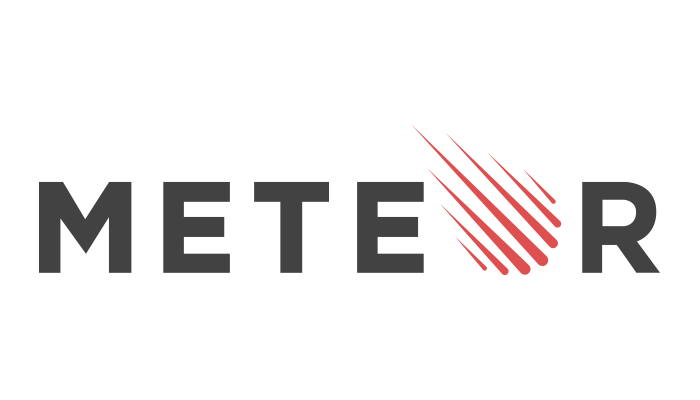Technology Introduction

Meteor 101 presentation by Mike Barkas
This is a very basic overview of the Meteor platform
What is Meteor?
Meteor is not just one thing.
It is a collection of technologies working together.
Open source, pure Javascript, platform
encompassing server-side to client-side
For building Web applications
Meteor Development Group
San Francisco, CA
Who Makes Meteor?
Meteor was created in 2012 by Geoff Schmidt, Nick Martin, and Matt DeBergalis.
Backed by Andreessen Horowitz, Matrix Partners, Y Combinator, and individual investors
Meteor was originally named Skybreak
the name was changed in 2011
Meteor, an ultra-simple, database-everywhere, data-on-the-wire, pure-Javascript web framework. - github/meteor
Meteor is a complete open source platform for building web and mobile apps in pure JavaScript. - meteor.com
Principles of Meteor
Data on the Wire. Meteor doesn't send HTML over the network. The server sends data and lets the client render it.
One Language. Meteor lets you write both the client and the server parts of your application in JavaScript.
Database Everywhere. You can use the same methods to access your database from the client or the server.
Latency Compensation. On the client, Meteor prefetches data and simulates models to make it look like server method calls return instantly.
Full Stack Reactivity. In Meteor, realtime is the default. All layers, from database to template, update themselves automatically when necessary.
Now lets look at how Meteor implements these principles by looking closer at the stack technology
Meteor Full Stack Technologies
MongoDB
Data Source
Livequery
Creates a stream of create, update, and delete messages
DDP
Continuous data transfers
Application
Client cache mini database
MiniMongo
Web app with optional mobile platform wrappers
Blaze
Reactive UI library and templates
implementing Meteor Tracker
Network
Client
Server
Old Stack Technologies
SQL
Data Source
PHP ASP
Application
Templates
HTML CSS
Network
Client
Server
Server Logic
Presentation Layer
Website
Request and Response
SQL
PHP ASP
Website
Templates
HTML CSS
Network
Client
Server
MongoDB
Livequery
Meteor
MiniMongo
Blaze
DDP
DDP
Distributed Data Protocol
Network
Client
Server
MongoDB
Livequery
MiniMongo
DDP
A simple protocol for fetching data from a server, and receiving live updates.
JSON messages over a Websocket
Publish and Subscribe
Network
Client
Server
Publish Data
Subscribe to Data
Data is published, sent out from server-side code.
Subscribe to only the data or content needed for that template.
Meteor Pros and Cons
Pros:
One language, client and server
MongoDB
Client-side data storage
Continuous syncing client and server
Latency compensation
UI Reactivity
Cons:
Content management
Creating and Developing Meteor Apps
Simple install process:
curl https://install.meteor.com/ | shHome directory on *nix systems
Developer Tools:
Includes stack to run Meteor
Meteor command line tools
Insecure and autopublish packages
Debug and inspect with browser console
Your First Meteor App
Initial project set up behaves like single page app
.meteor/
appName.js
appName.html
appName.css
cd appName
meteormeteor create appNameExtend your project with Packages (plug-ins or modules)
Atmosphere Package Collection
https://atmospherejs.com/
meteor add twbs:bootstrapExtending Meteor
Isolating Client and Server Code
For security and performance
Conditional checks in code
if (Meteor.isClient) {
// Code to run on client
}
if (Meteor.isServer) {
// Code to run on server
// Do not include sensitive data
}Isolating Client and Server Code
For security and performance
Isolate and segment code using a directory structure
server
client
public
Client directories are not loaded on the server
Sensitive code not served to the client
For favicon.ico, robots.txt, and similar files.
There are other directories and file loading precedence
Begin with Meteor
Install local instance to learn
Experiment
Look at tutorials
Read the documentation
Meteor Developer Accounts
Your Meteor developer account is one username to identify you across the Meteor community.
You can use it to publish packages, deploy apps, and log into other sites.
sign up at:
meteor.com
Meteor Simple Hosting
Using your Meteor developer account, you can use their simple hosting service.
This is not production level hosting service
Basic prototyping and displaying your app.
Simple subdomain hosting
yourapp.meteor.com
Resources
Meteor site
Meteor install
Meteor API docs
http://themeteorchef.com
The Meteor Chef
https://www.discovermeteor.com
Discover Meteor
Meteor JS Club
https://meteorjs.club
http://www.meteor.com
http://www.meteor.com/install
http://docs.meteor.com
https://crater.io/
Crater Meteor News
Install Meteor
curl https://install.meteor.com/ | shMore info:
https://www.meteor.com/install
Meteor 101
By mikebarkas
Meteor 101
The fundamental concepts of the Meteor framework.
- 335


